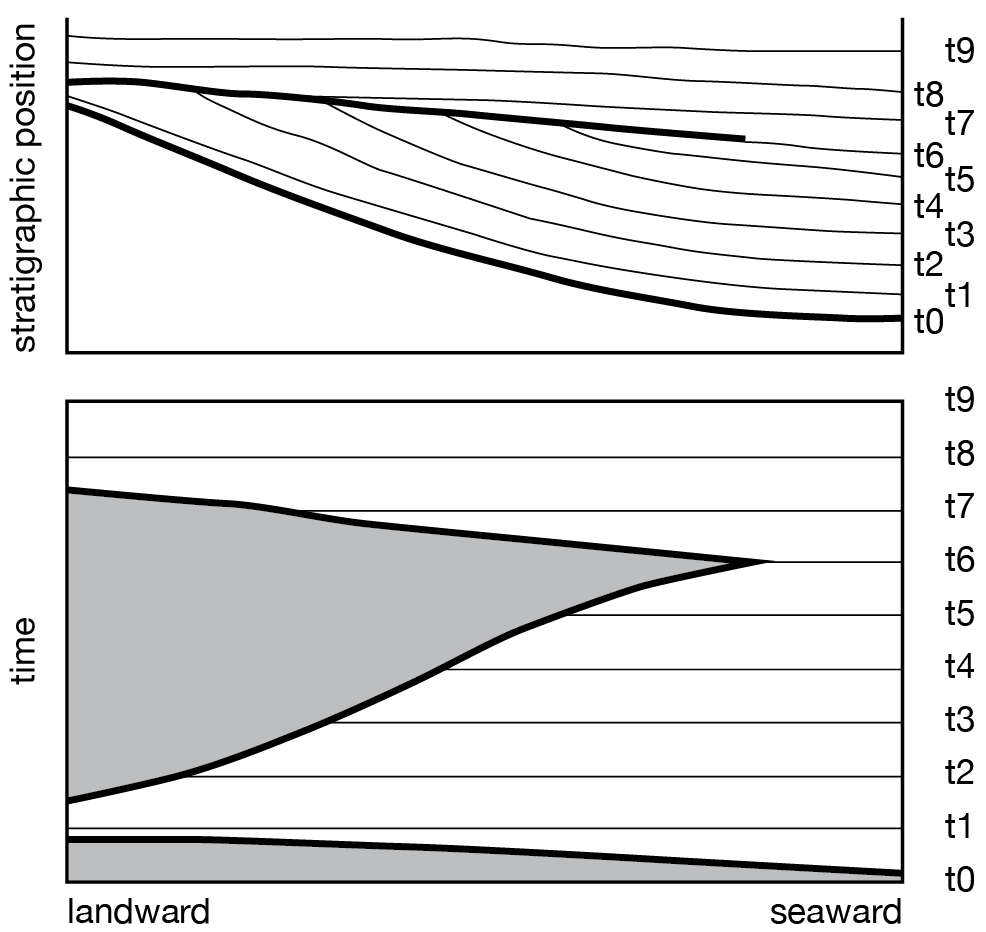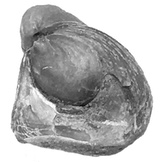Chronostratigraphic Applications
Some sequence stratigraphic surfaces can be used for chronostratigraphy in that that all strata above that surface everywhere than all strata below that surface anywhere, in other words, no rock above that surface anywhere it exists would be younger than any rock collected anywhere else below that surface. Not all sequence stratigraphic surfaces have this property.
At a local scale, parasequence boundaries (flooding surfaces) are often useful for correlation, provided that each can be reliably distinguished from other similar-looking surfaces. Because individual parasequences may look so similar, long-distance correlation of parasequence boundaries is prone to error and must be checked with other means of correlation.
For depositional sequences within individual sedimentary basins or portions of them, the transgressive surface (maximum regressive surface) and maximum flooding surface can also be useful correlation markers. Because both are defined by changes in stacking patterns (from progradational to retrogradational and from retrogradational to progradational, respectively), they are controlled by the rate of accommodation as well as the rate of sedimentation. If the rate of sedimentation varies regionally or among basins, the ages of these surfaces will change and they will not be chronostratigraphic markers. Specifically, as sedimentation rates increase geographically, the age of transgressive surface (maximum regressive surface) will get younger and the age of the maximum flooding surface will get older. Because sedimentation rates assuredly change as distances become greater, the transgressive surface and maximum flooding surface become less reliable chronostratigraphic markers over long distances.

Stratigraphic cross-section (upper) and chronostratigraphic (Wheeler) diagram lower, illustrating the chronostratigraphic potential of a subaerial unconformity (bold black lines, gray region). Note that every possible rock from above this surface must be younger than every possible rock from below this surface, the definition of chronostratigraphic significance. This unconformity would have an age of t6. Based on Wheeler (1960).
The sequence boundary has attracted the most attention as a potentially correlatable and chronostratigraphically significant surface. Although chronostratigraphic significance is clear along depositional dip, as shown above, it is less certain along strike or in different sedimentary basins. For example, early studies suggested that the age of the sequence boundary would coincide with time of the maximum rate of fall in eustatic sea level, regardless of the rate of basin subsidence. More recent modeling studies suggest that the timing of the sequence boundary can vary from the time of maximum rate of eustatic fall to the time of the lowest position of eustatic sea level. Moreover, higher tectonic subsidence rates and higher rates of sediment supply may cause the timing of the sequence boundary to be delayed. If these modeling results are correct, then the sequence boundary could differ in age by as much as ¼ of the duration of a eustatic cycle. Such diachroneity remains to be proven. More troubling is the potential for cycles of mantle upwelling and downwelling to create depositional sequences and their unconformities. If this proves to be an actual mechanism of creating depositional sequences, their sequence boundaries could be markedly diachronous.
It must be pointed out that there are few truly chronostratigraphically significant surfaces at the global scale. Even biostratigraphic markers can display diachroneity of hundreds of thousands of years. Even if sequence stratigraphic surfaces have some diachroneity, it may still in many cases be less than the diachroneity involved with other methods of correlation. Actual measurements of the diachroneity of sequence stratigraphic surfaces are sorely needed.

